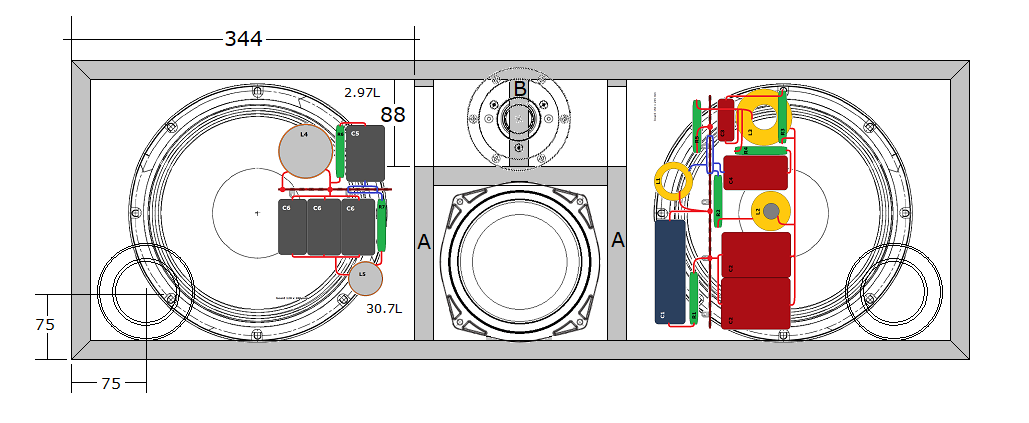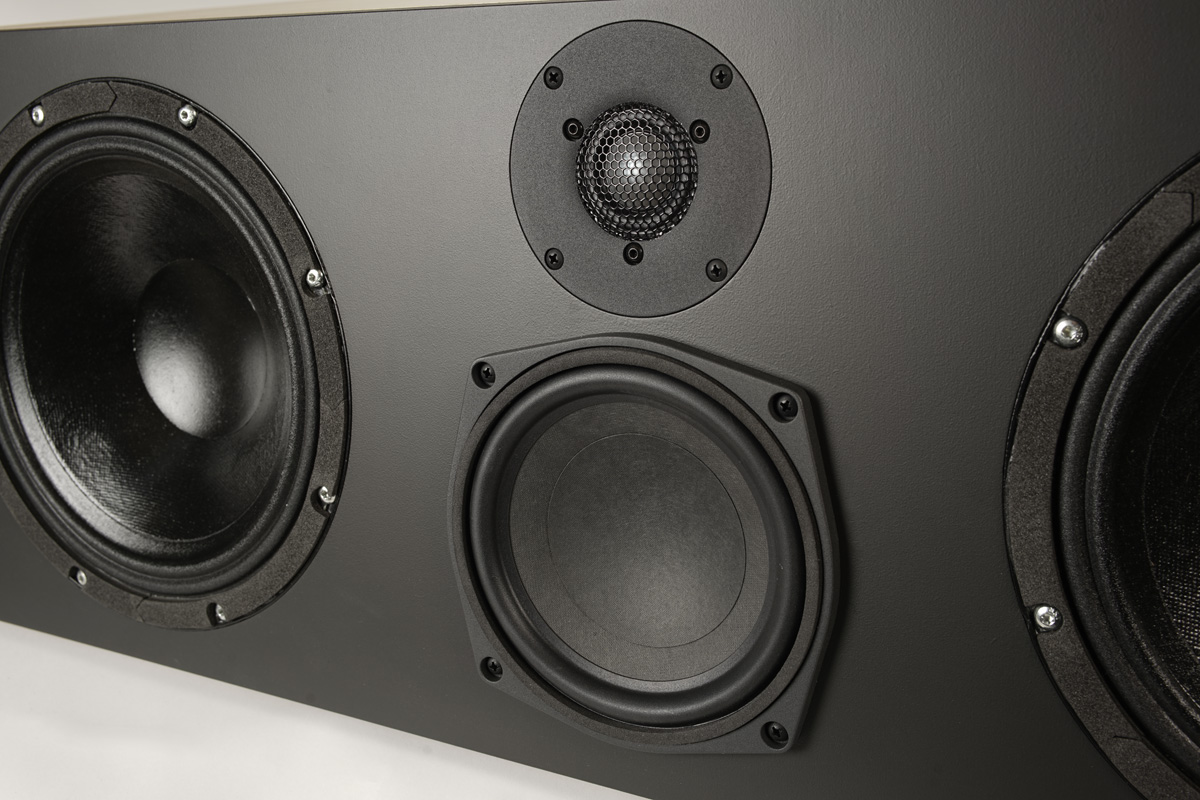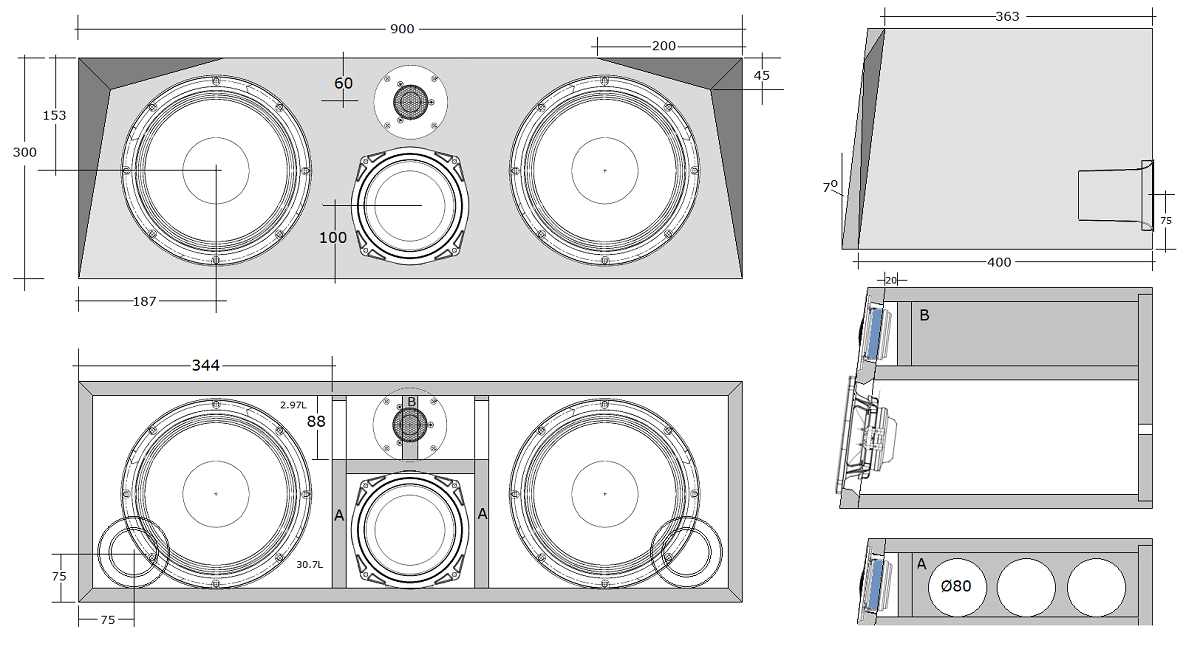TL-CENTER
High-efficiency
Center for The Loudspeakers:
TL-1, TL-2, TL-3 and Faital-3WC-15
Copyright 2023 © Troels Gravesen
Go to on this page:
DRIVERS CROSSOVER CABINET WORKSHOP PICS MEASUREMENTS SPEAKER-KIT CROSSOVER LAYOUT
There have been
requests for a center speaker for the The Loudspeaker-1/-2/-3 and
Faital-15, matching the
potential of these systems, and none of my existing designs are hardly
up to the task, maybe except the 8008-CENTER, but here is a design that
will truly match potent, high-efficiency main speakers in a surround
system.
The magnificent Faital 6RS140 driver was an easy choice for midrange and
the SBAcoustics SB29BAC-C000-4 Beryllium tweeter another easy choice.
For bass there were several options and having quite some experience
with the 18 SOUND 10" bass driver, 10NW650, this was tried and found
more than suitable. This driver is seriously efficient and we have to
use two drivers in series, delivering a healthy impedance
above 8 Ohms in the bass region. Most amps will love this.
Having two 10" midbass drivers calls for some cabinet volume and the
TL-CENTER is not a small speaker as can be seen below, but so it must
be.
Center speakers really do not have to play deep bass and the TL-CENTER
may on paper do well down to around 50 Hz and 40Hz including
assumed room-gain, but believe me, it can play bass.
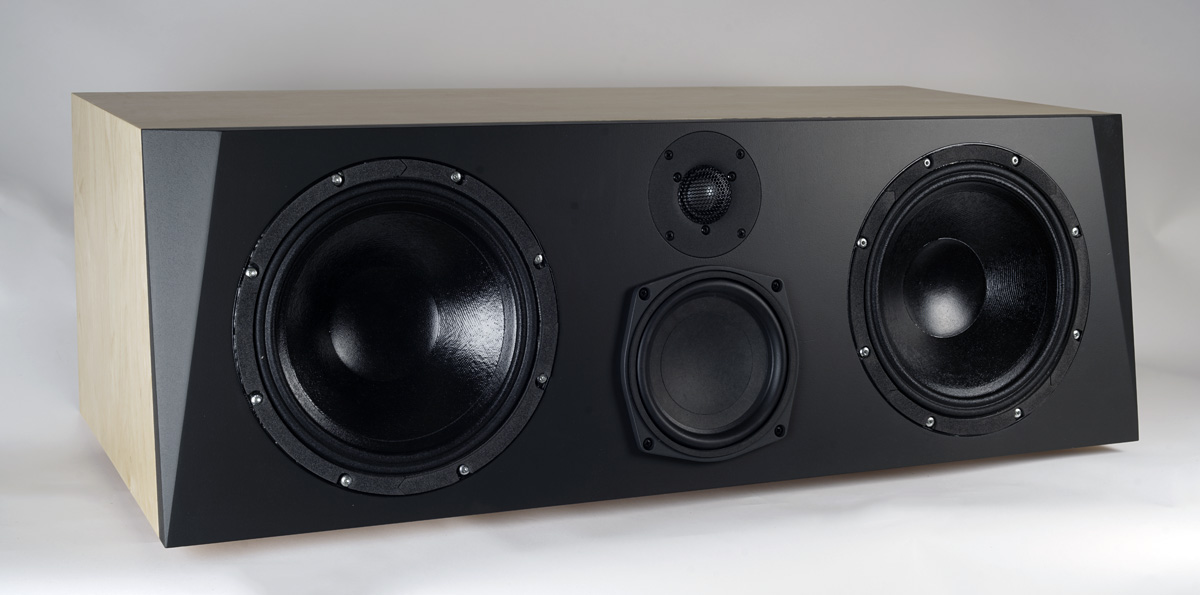
Basics:
4-driver speaker.
Dimensions: 90 x 42,5 x 30 cm, WxDxH.
System sensitivity: ~93dB/2.8V/1 meter.
Impedance: 4-8 Ohms.
Power requirement: 30+ watts/channel.
Useful links (Please
follow all links before e-mailing!):
http://www.troelsgravesen.dk/tips.htm
http://www.troelsgravesen.dk/tips.htm#CONSTRUCTION_OF_CROSSOVERS
http://www.troelsgravesen.dk/crossovers.htm
http://www.troelsgravesen.dk/LCR-RC.htm
http://www.troelsgravesen.dk/Inverted-Polarity.htm
http://www.troelsgravesen.dk/choices.htm
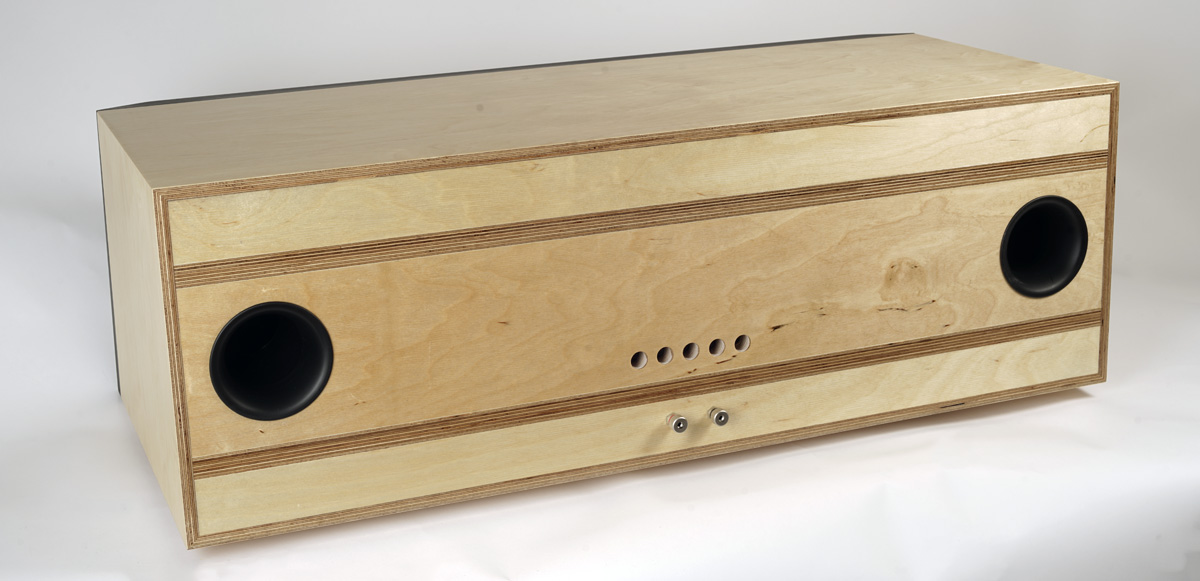
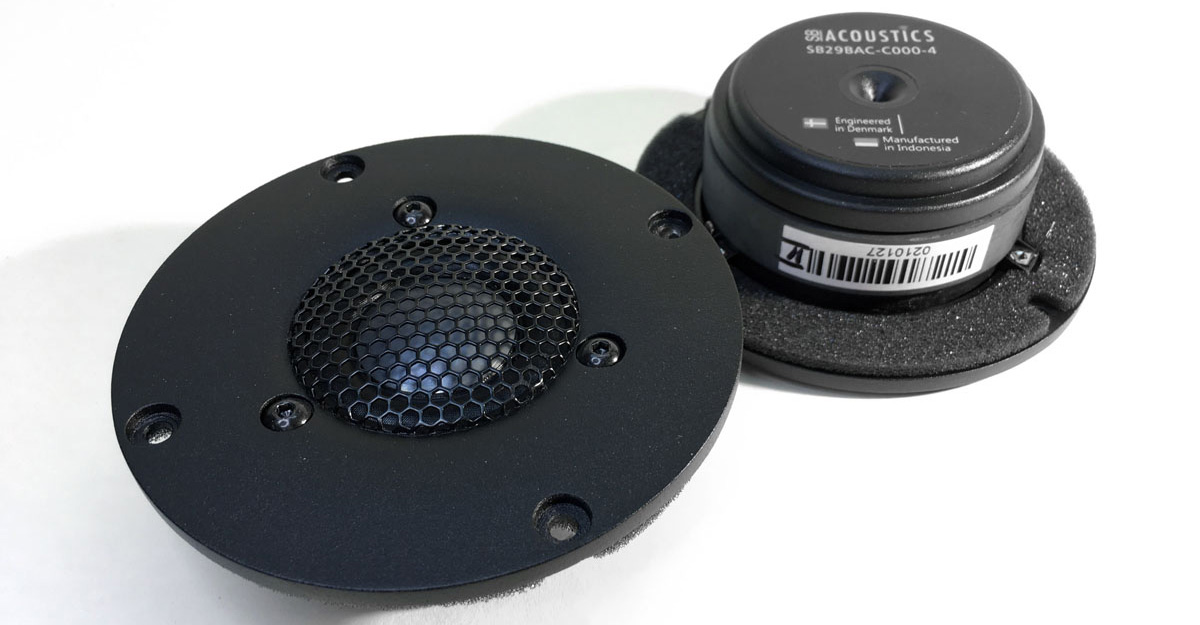
SBAcoustics Be-dome: SB29BAC-C000-4, 4 Ohms.
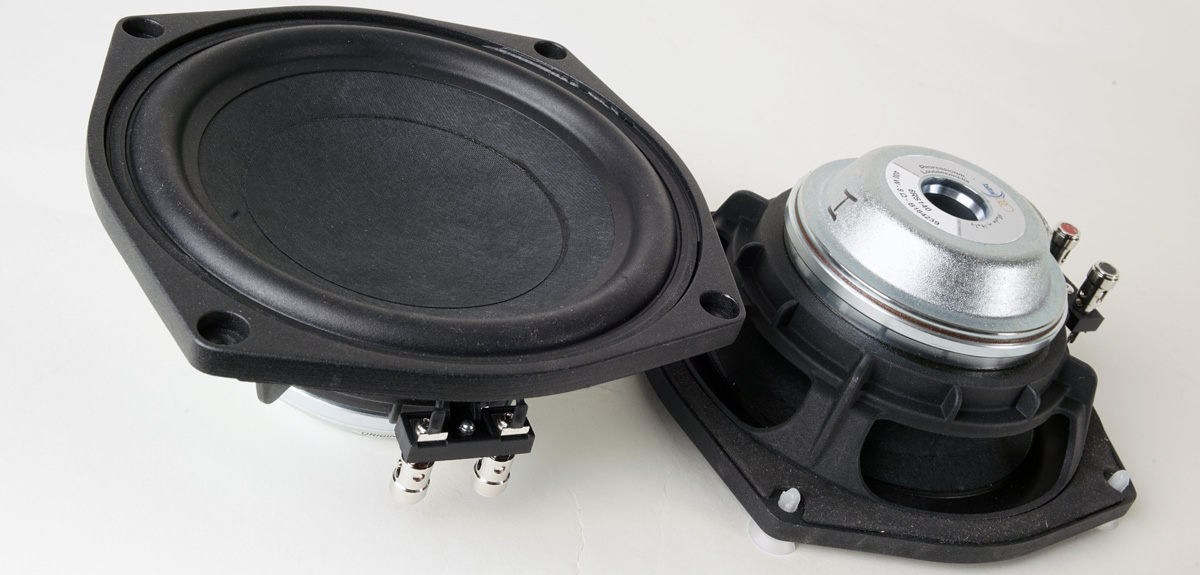
Faital-6RS140, 8 Ohms.
Read the excellent review by Dickason in AudioExpress.
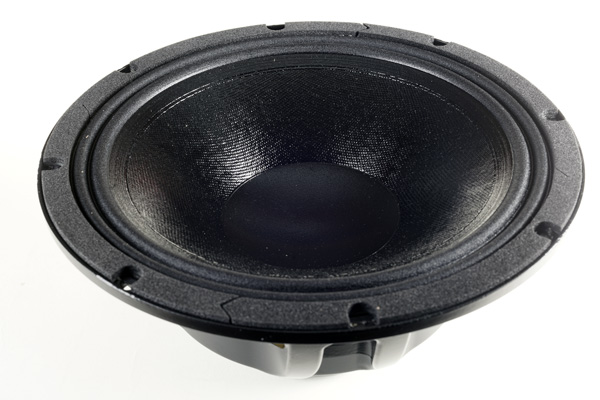
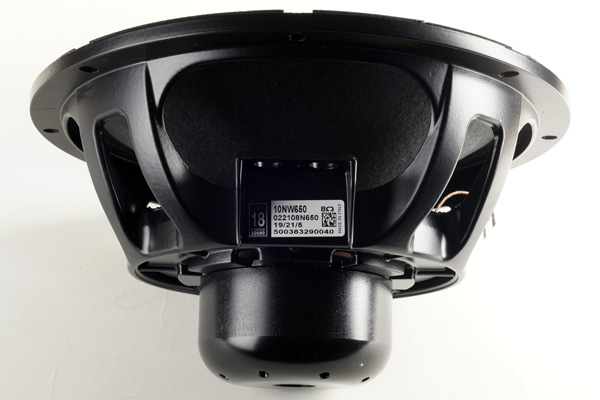
18 SOUND midbass driver: 10NW650, 8 Ohms.
Click images to view large.
Download specs here:
SBAcoustics tweeter:
SB29BAC-C000-4
Faital midrange:
6RS140 (8
Ohms)
18 SOUND midbass:
10NW650
(8 Ohms)
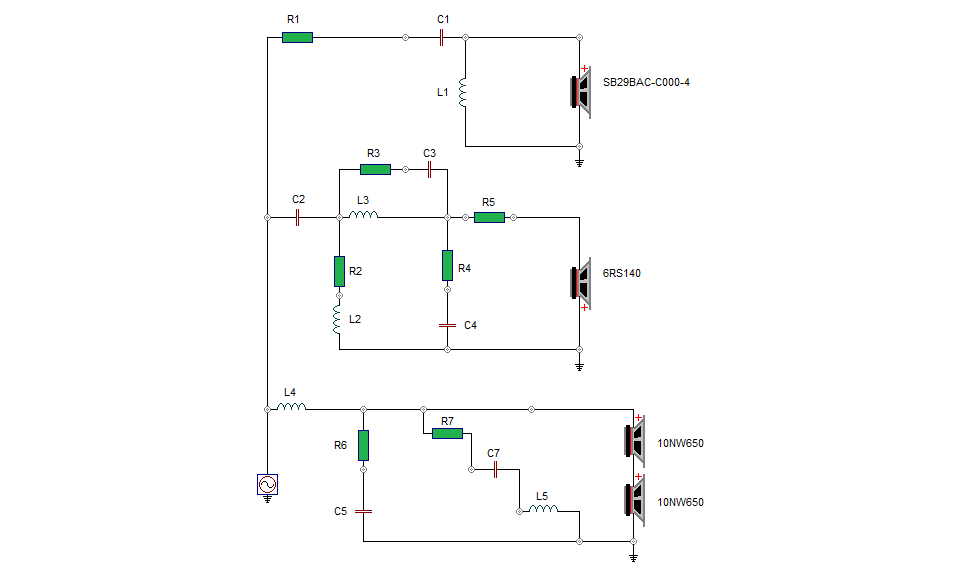
Please remember to read this carefully:
http://www.troelsgravesen.dk/LCR-RC.htm
Cabinet was made from 21 mm Baltic birch and front panel from 25 mm HDF
(Valchromat). Chamfering the front panel is optional. You can just make
it flat and add a front grill if needed.
On the rear of the midrange compartment drill 5 holes of 15 mm diameter
- or make a slot of similar area. Cover on inside with one layer of grey
felt glued around the holes. This makes an
aperiodic tuning of the midrange.
The ports can be placed as seen on drawing - or in the middle, not
critical, but to the outer end to make room for the crossovers next to
MT section. See below.
Make ~8 mm holes in vertical panels at bottom of midrange cabinet for
wiring and also holes for MT wiring.
Seal properly once wires have been added.
Ports are 68 x 120 mm as delivered.
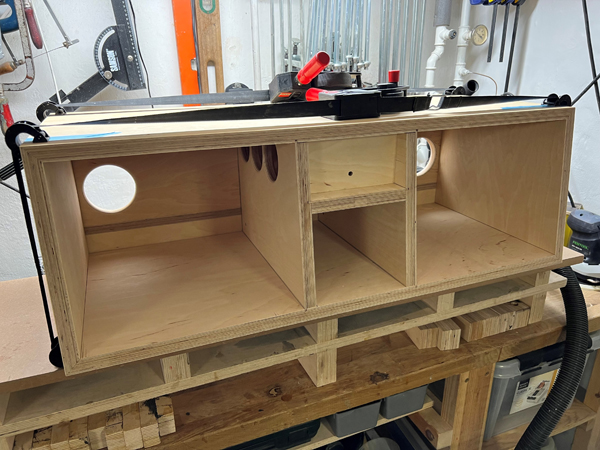
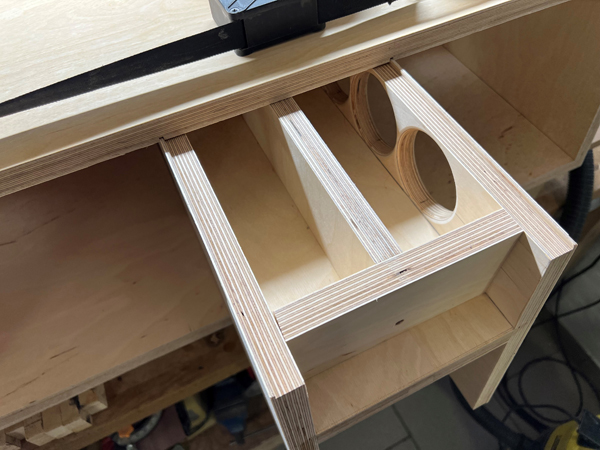
The great thing about center speakers is that you only have to make one :-)
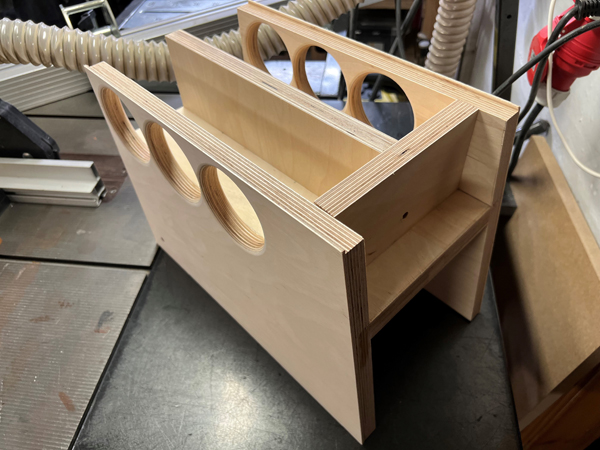
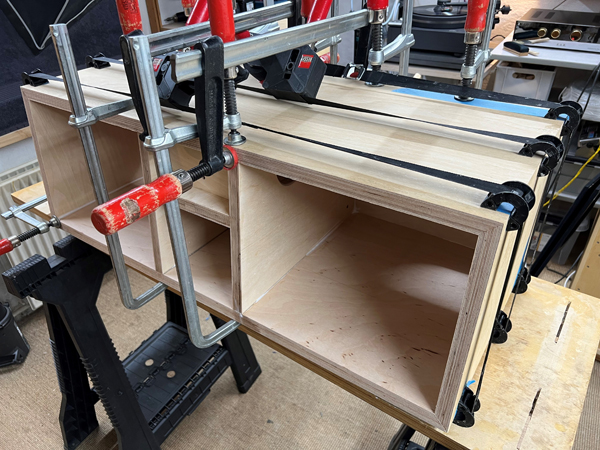
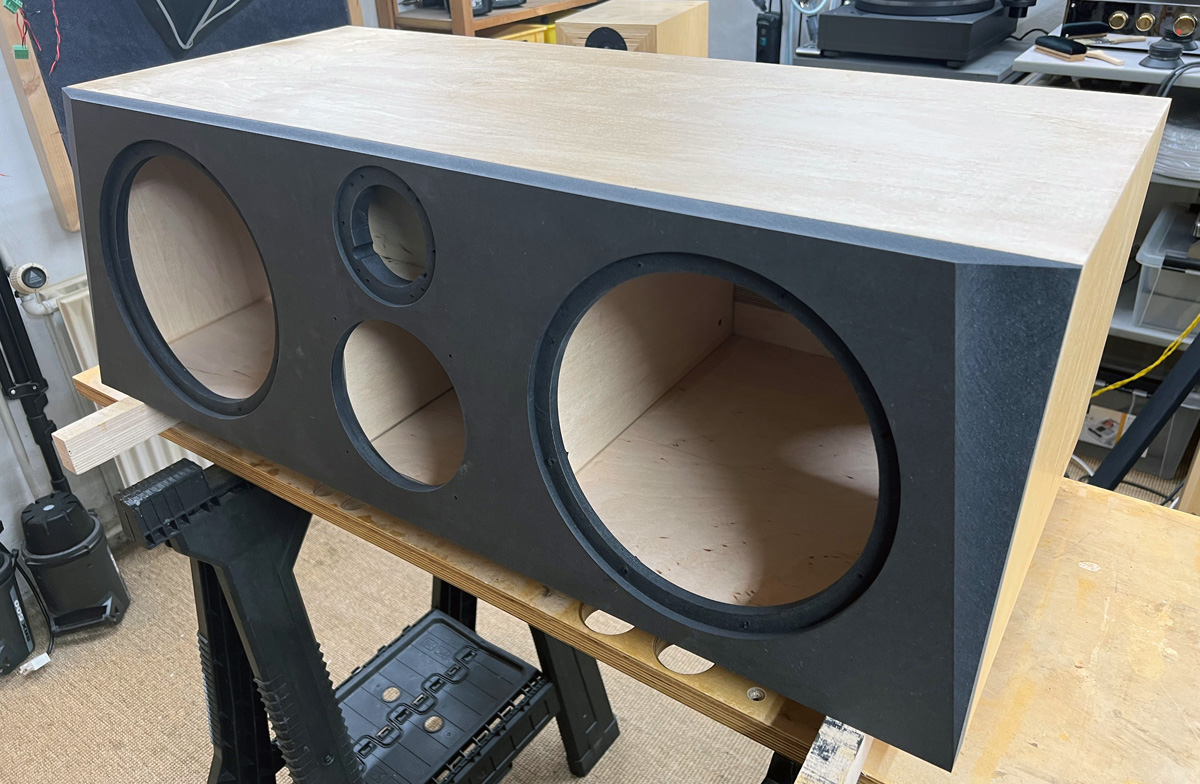
Faceting front panel is optional, but looks
nice. I decided only to do the sides.
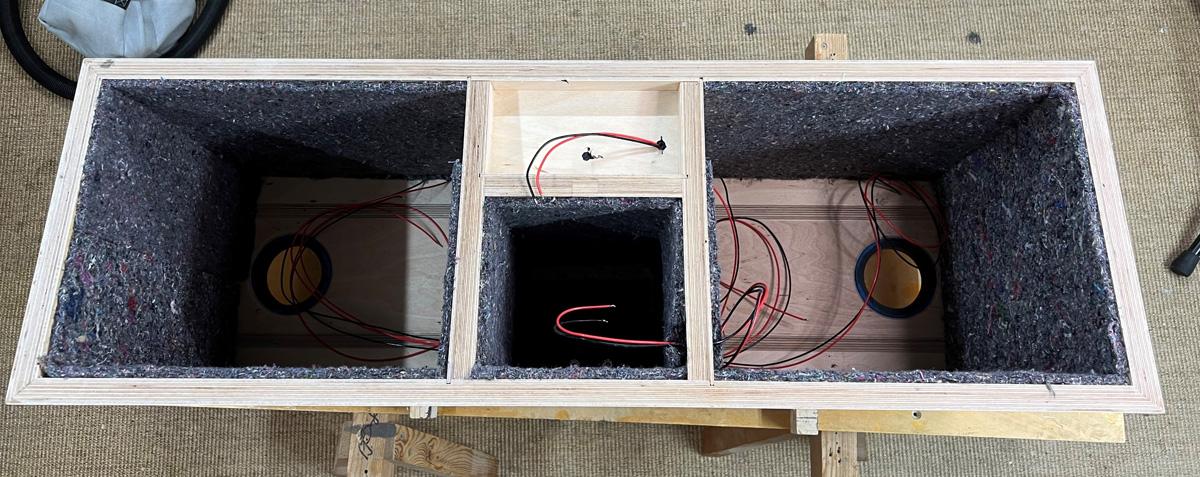
All felt material in place.
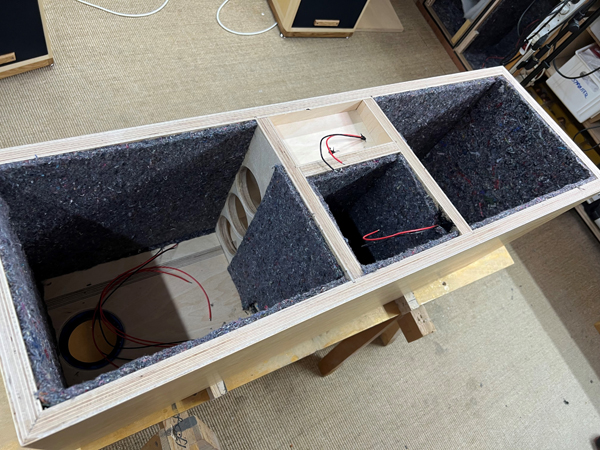
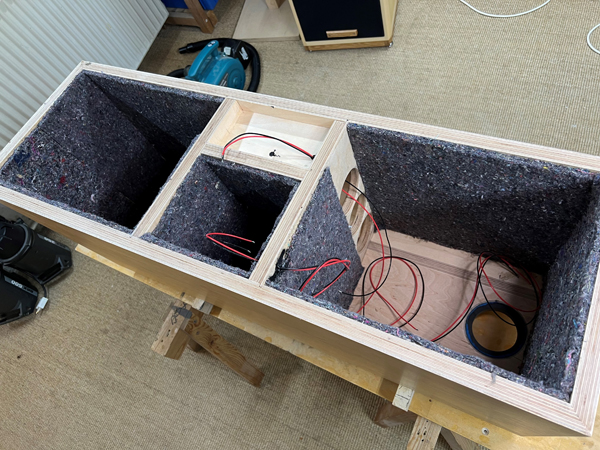
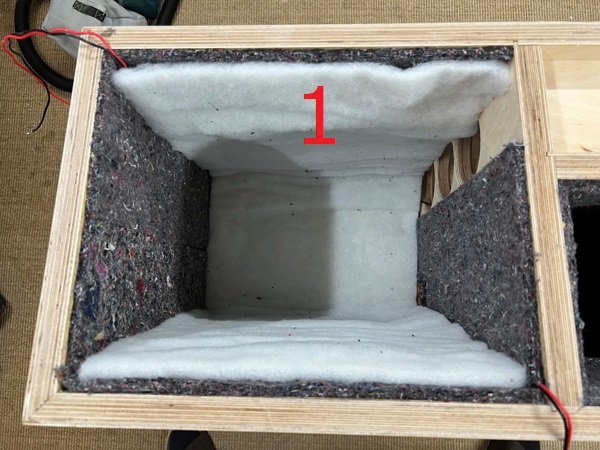
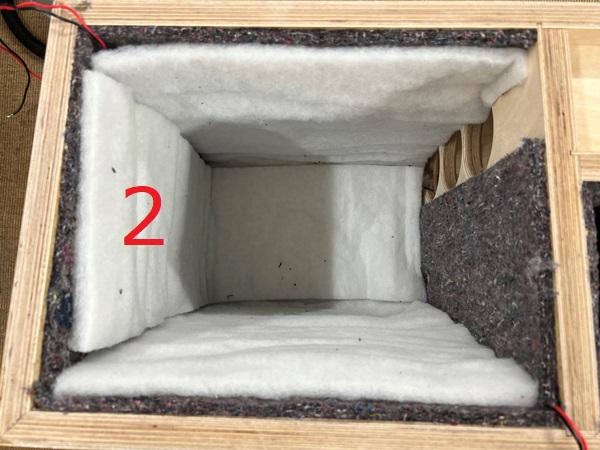
Add acoustilux as seen on images. Fasten with
10 mm staples.
Make hole for port (not seen here).
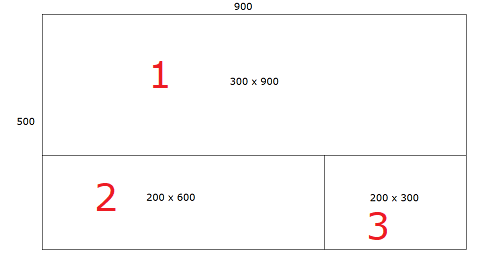
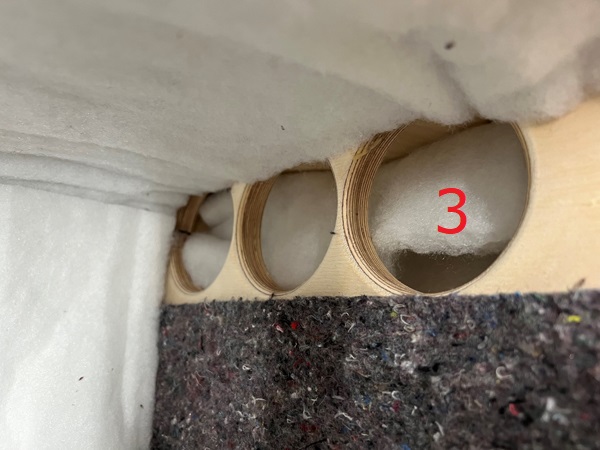
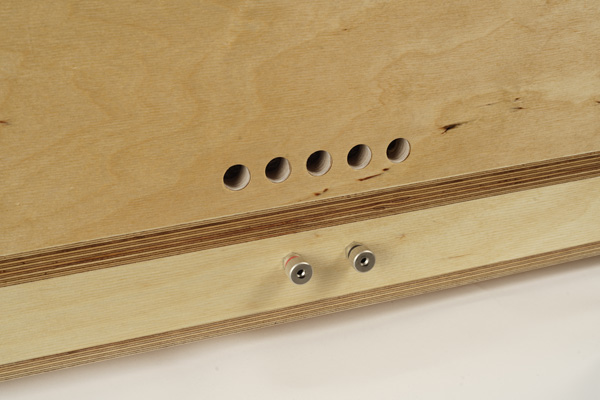
Make 5 pcs 15 mm holes in rear panel towards
midrange cabinet - or make slot or similar square area.
This to make an
aperiodic tuning for the midrange.
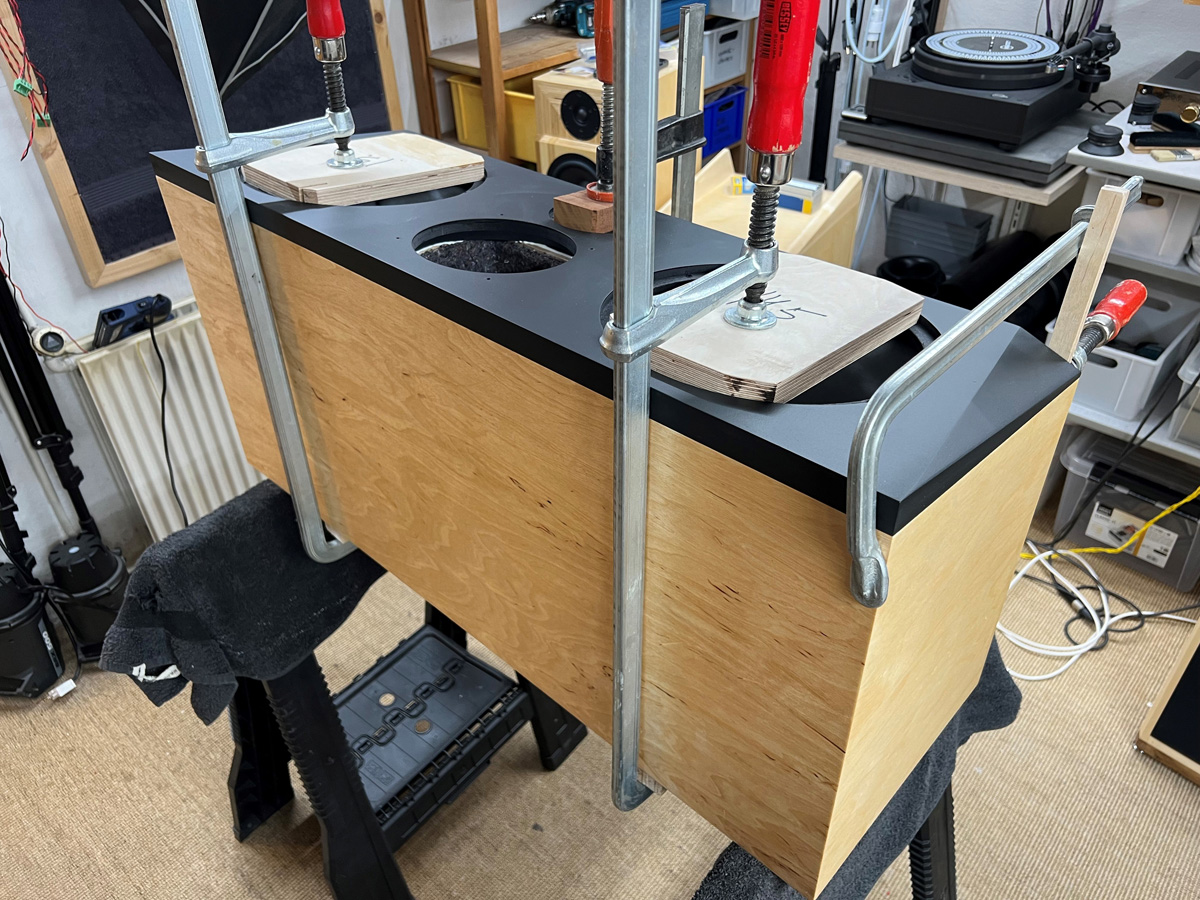
Gluing the front panel.
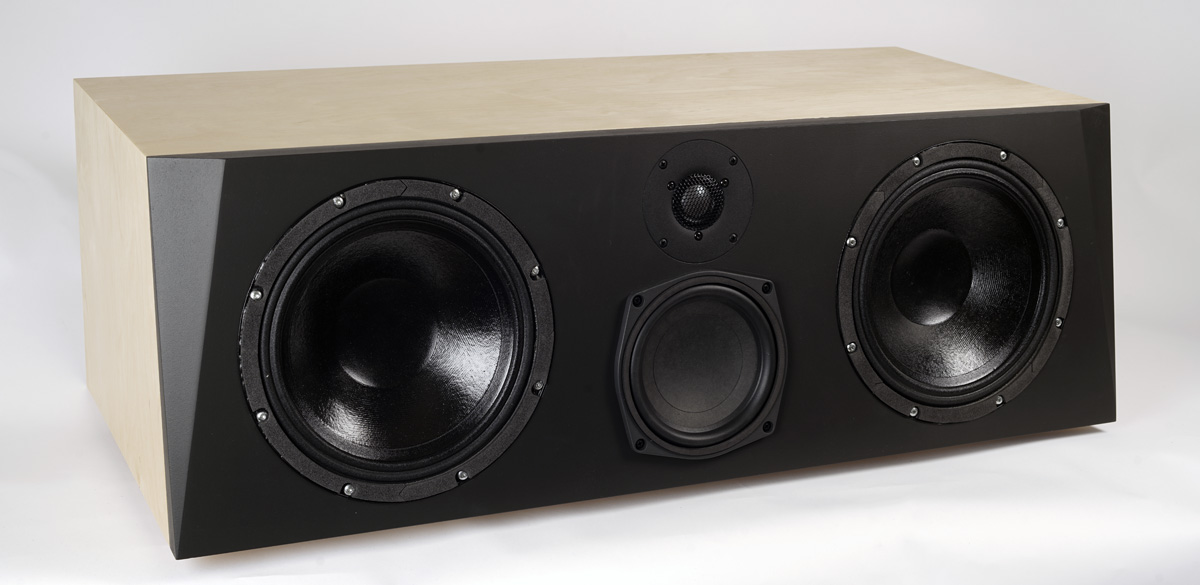
A few comments on
MEASUREMENTS before you start interpreting the readings below.
First of all, if we think measurements will
tell us how a speaker sounds, we're wrong. The perception of sound is
way too subjective to be reflected in any measurements we can perform. A
loudspeaker system is meant to give us a satisfying idea of an acoustic
event and for some people a pair of 5 USD ear-plugs are enough, others
spend 200 kUSD on a truly full-range pair of speakers - and the latter
may not be happier than the former.
Measurements may give us an idea of tonal balance of a system, i.e. too
much or too little energy in certain areas, although dispersion
characteristics play a vital role here. A two-way 7+1 and a three-way
7+4+1 may display similar horizontal dispersion, yet sound very
different. Measurements may tell us about bass extension if far-field
measurements are merged with near-field measurements. In addition to
this, ports may contribute to bass extension. Most of we diy'ers do not
have access to an anechoic room for full-range measurements from
20-20000 Hz.
What cannot be seen is what kind of bass performance we get in a given
room. Bass performance is highly dependent on in-room placement of your
speaker and the same speaker can be boomy in one place and lean in
another. Actual SPL level at 1 meter distance and 2.8V input is useful
for en estimate of system sensitivity and combined with the impedance
profile may give an idea of how powerful an amplifier is needed to drive
the speaker to adequate levels.
What measurements do not tell is the very sound of the speaker unless
displaying serious linear distortion. The level of transparency, the
ability to resolve micro-details, the "speed" of the bass, etc., cannot
be derived from these data. Distortion measurements rarely tell much
unless seriously bad, and most modern drivers display low distortion
within their specified operating range.
Many people put way too much into these graphs and my comments here are
only meant as warning against over-interpretation. There are more to
good sound than what can be extracted from a few graphs. Every graph
needs interpretation in terms of what it means sonically and how it
impacts our choice of mating drivers, cabinet and crossover design.
What measurements certainly do not tell is the sonic signature of the
speaker, because speaker cones made from polypropylene, aluminum,
Kevlar, paper, glass fiber, carbon fiber, magnesium, ceramics or even
diamonds all have their way of adding spices to the stew. Nor do
measurements tell what impact the quality of the crossover components
add to the sound, from state of the art components to the cheapest of
coils and caps, they all measure the same if values are correct, yet
sound very different.
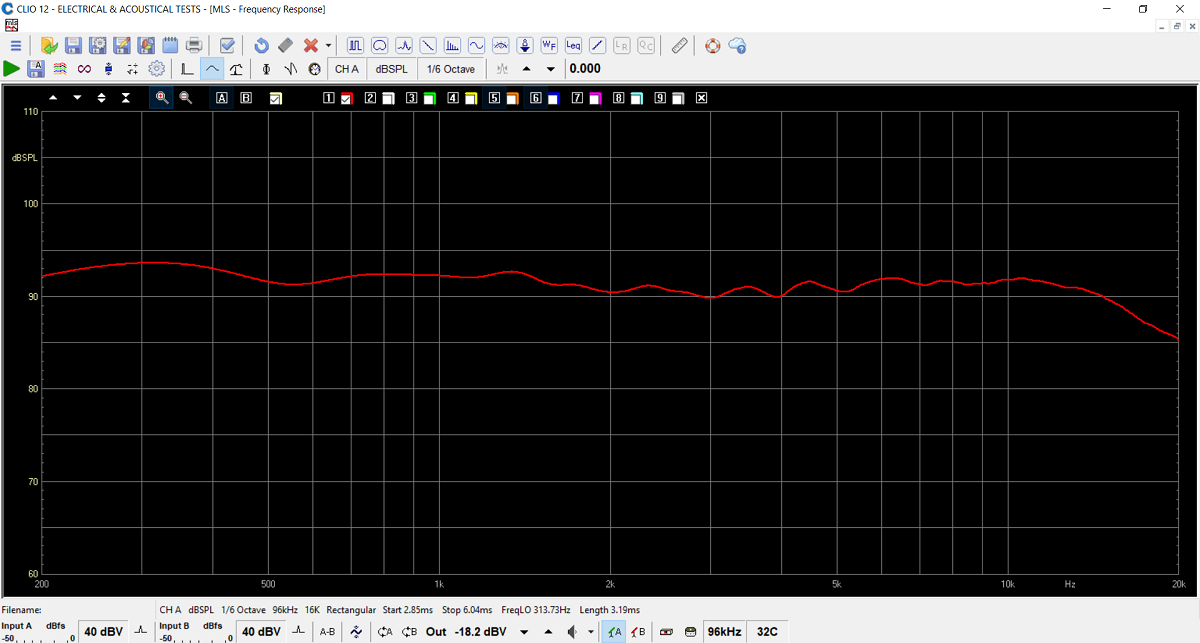
Basic SPL @ 1 meter, 2.8V.
System sensitivity around 92-93 dB.
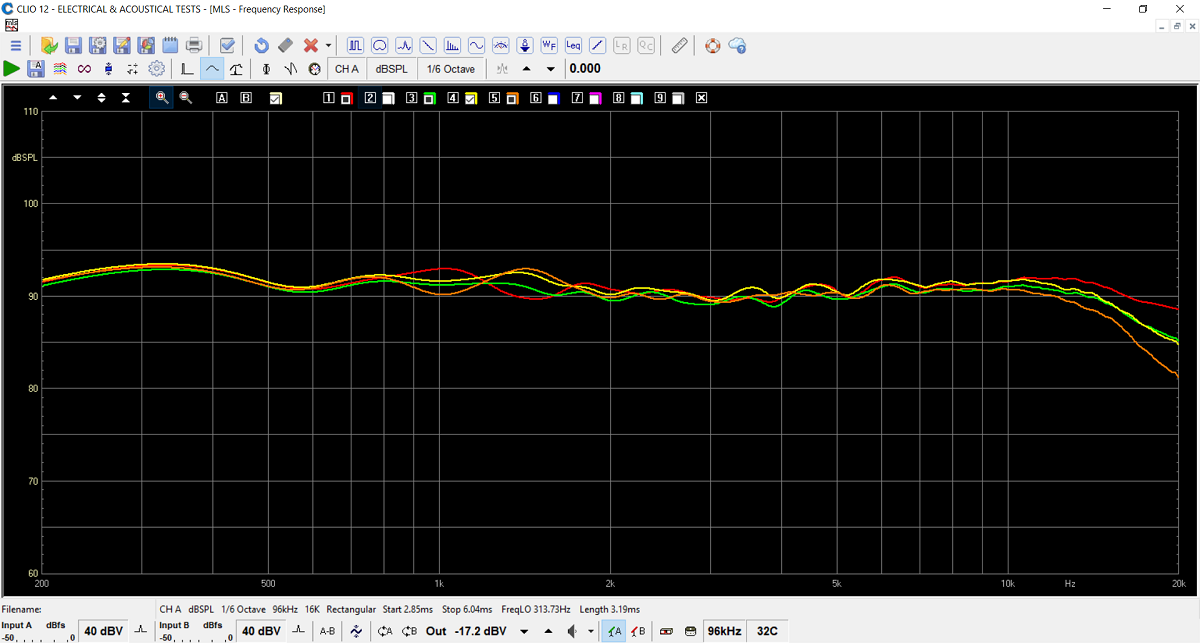
Horizontal dispersion at 0, 10, 20 and 30 deg off-axis (red, green,
orange and yellow).
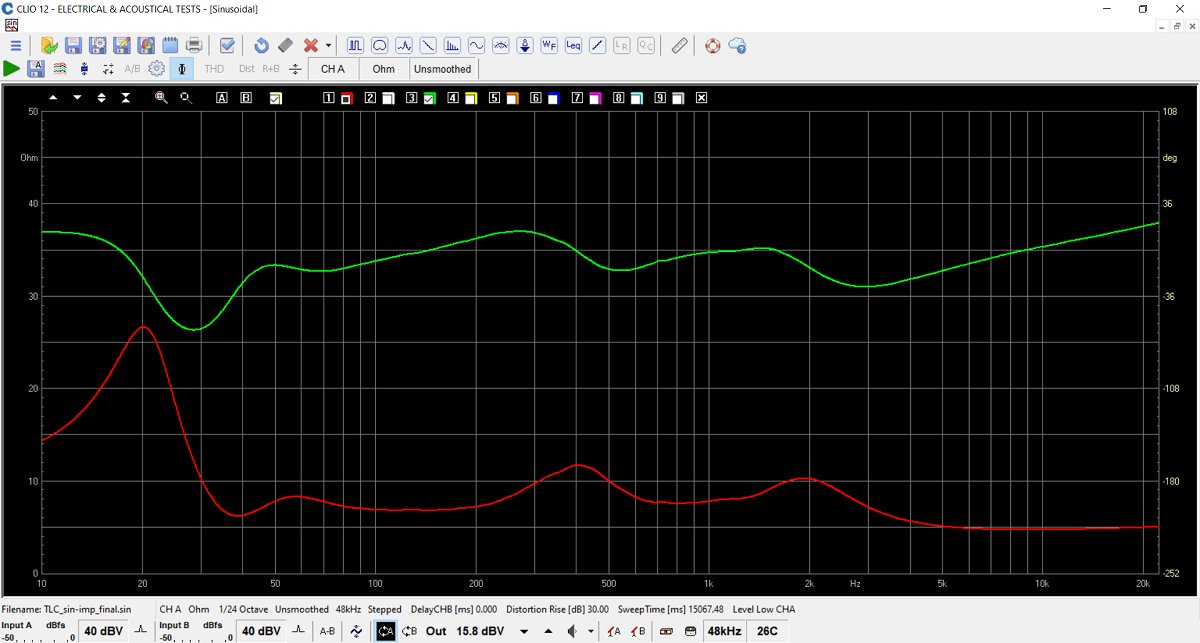
Final system impedance. Pretty much an 8 Ohm speaker.
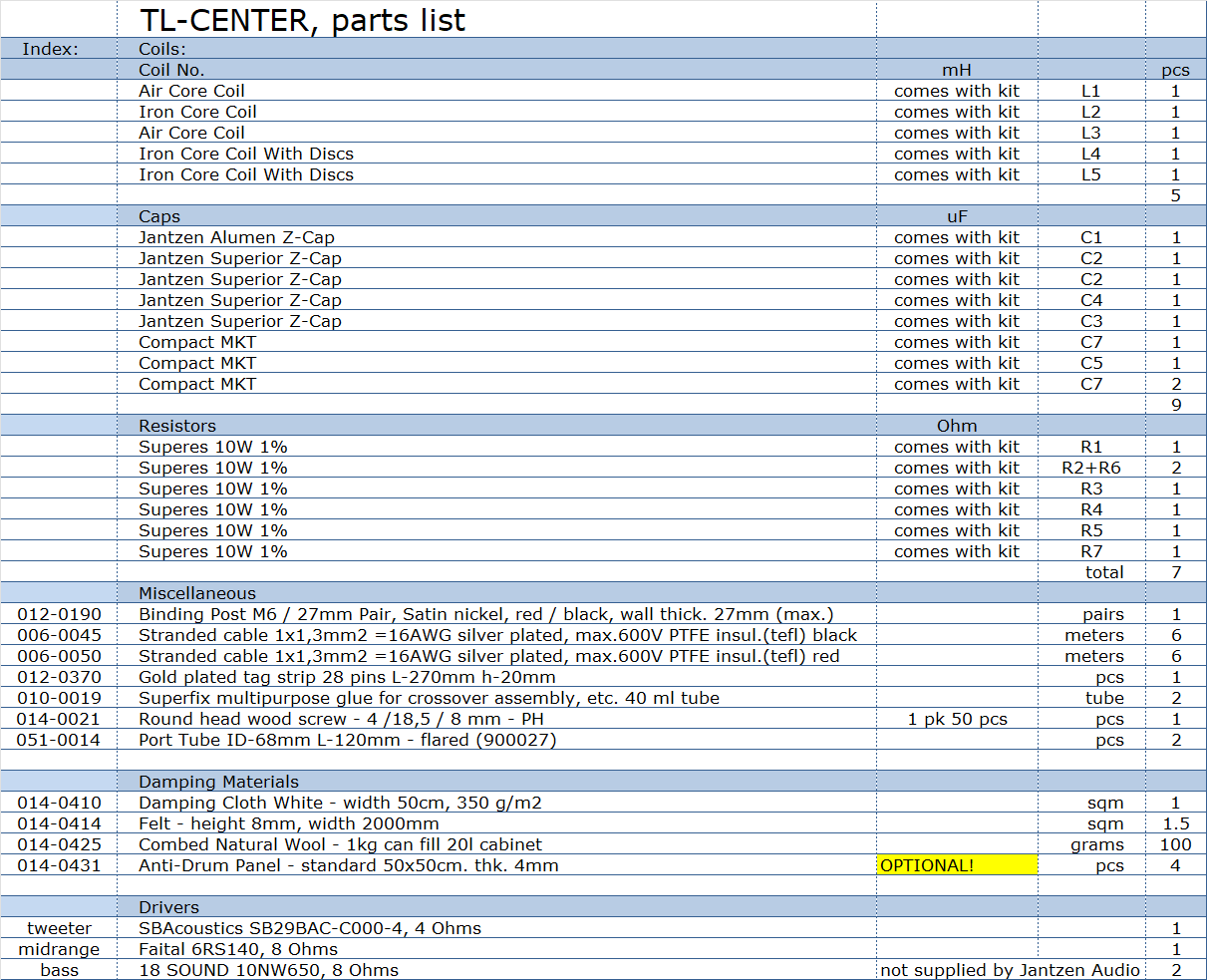
All kit and component prices may be subject to change and are always to be confirmed by Jantzen Audio Denmark.
Kits can always be bought with/without drivers, or some of the drivers.
18 SOUND drivers available from LEAN, UK.
Download Complete Kit Sale Presentations:

All technical questions to troels.gravesen@hotmail.com
All questions regarding purchase of kits, please mail Jantzen Audio at contact@jantzen-audio.com
CROSSOVER-LAYOUT
BACK TO INDEX
Check this out before you start making crossovers:
http://www.troelsgravesen.dk/tips.htm#CONSTRUCTION_OF_CROSSOVERS
- and not least this:
http://www.troelsgravesen.dk/LCR-RC.htm
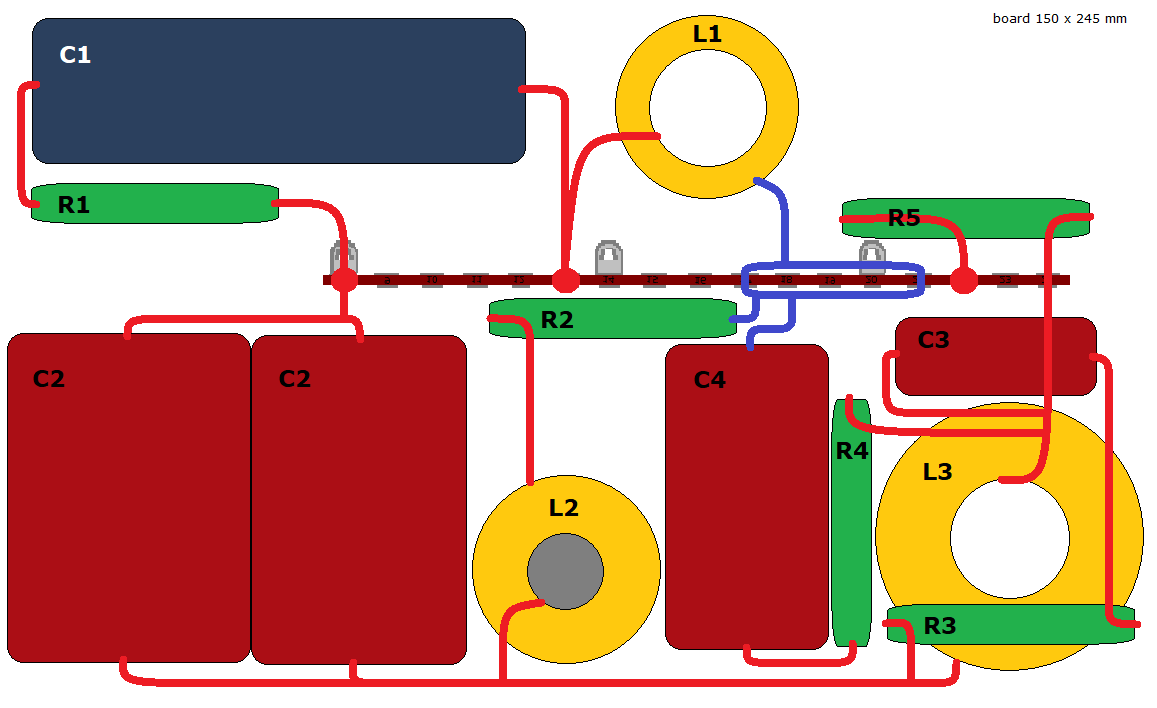
Mid-tweeter section
Cut the solder tag strip in two, 10 cm (for bass) and 16 cm (for MT section).
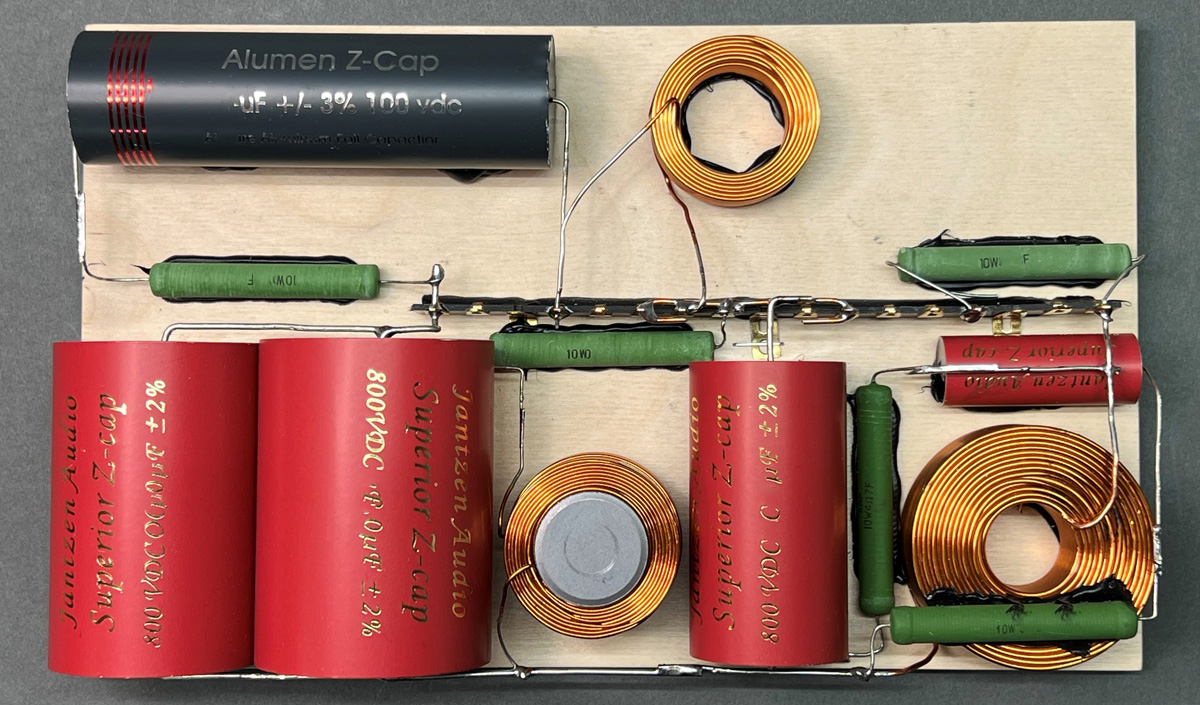
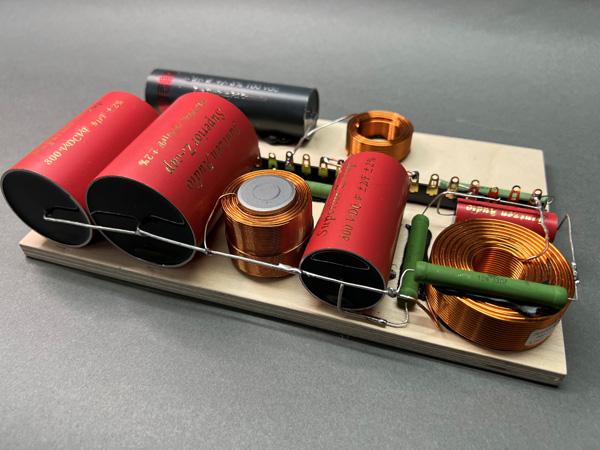
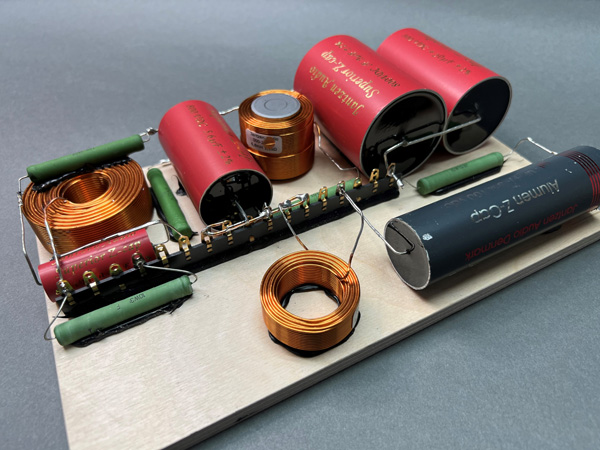
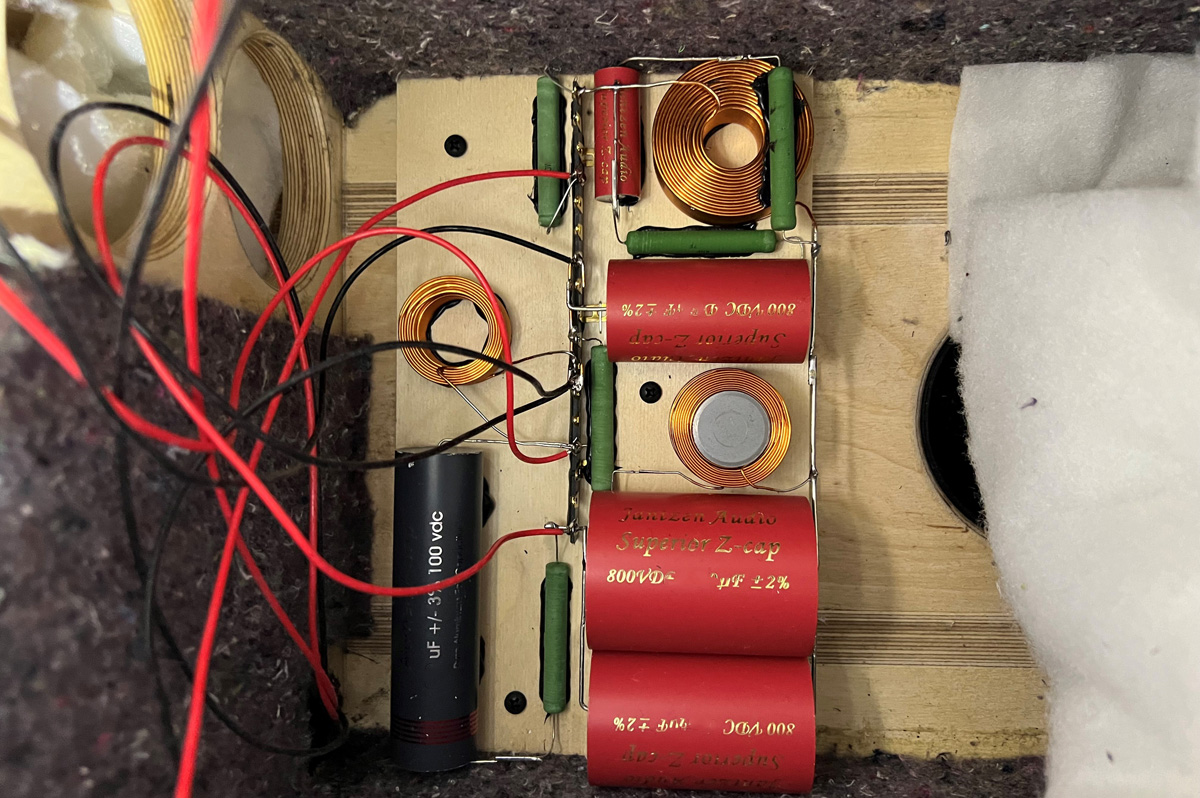
The MT section mounted on rear panel.
Bass crossover:
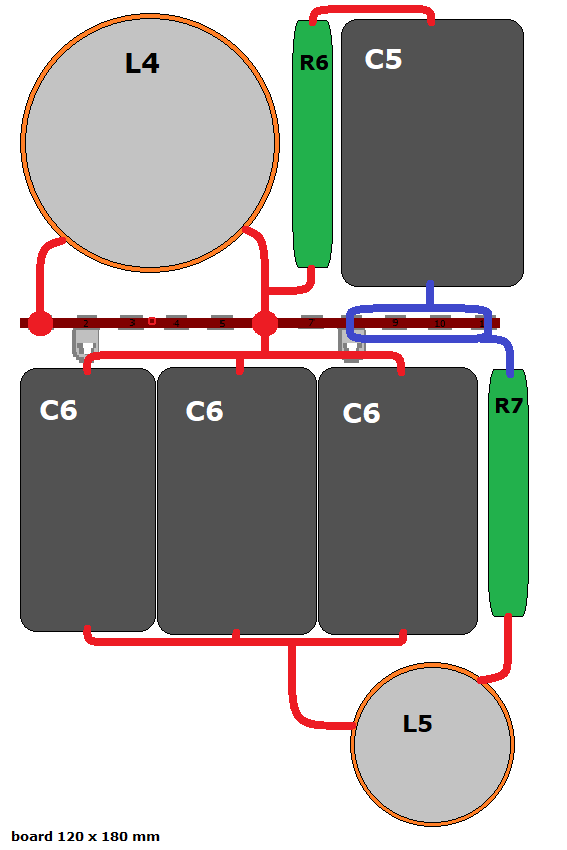
Bass section.
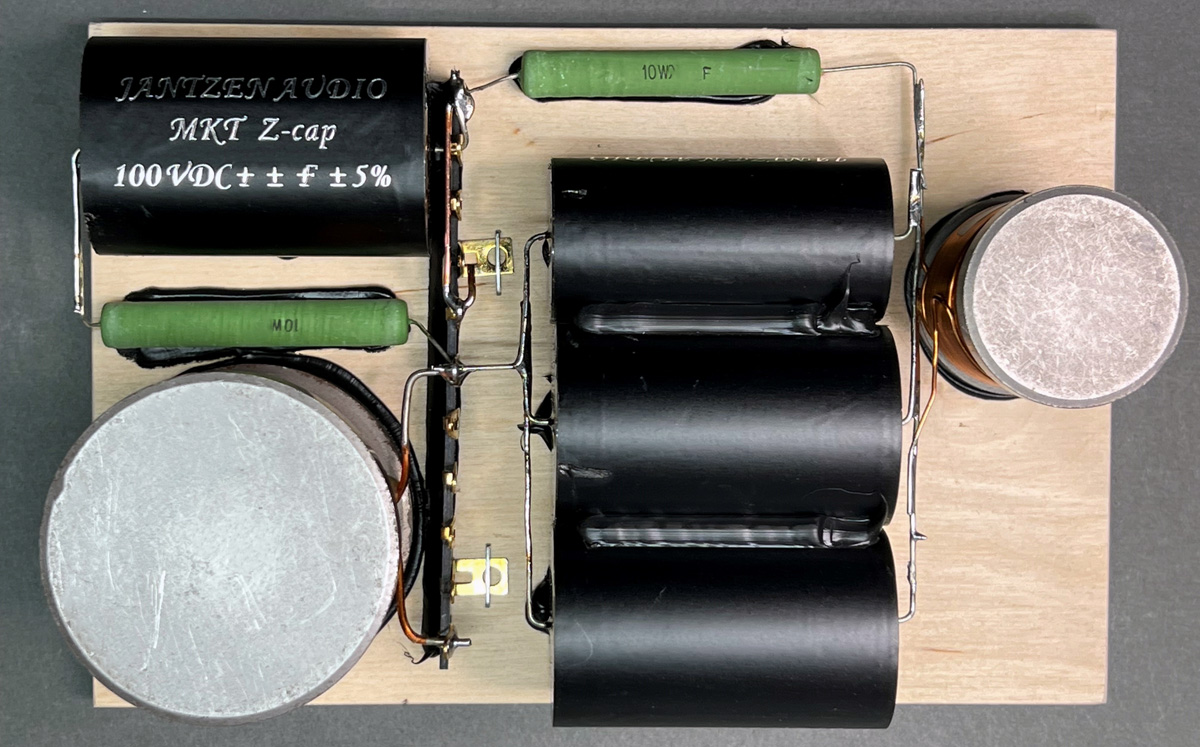
The MKT caps you will have are now white. Same thing, different wrap.
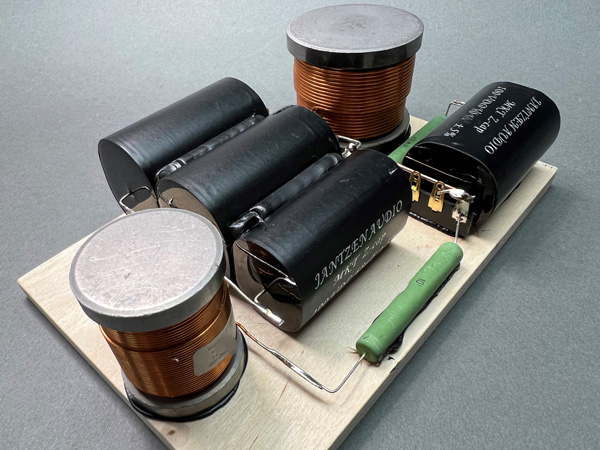
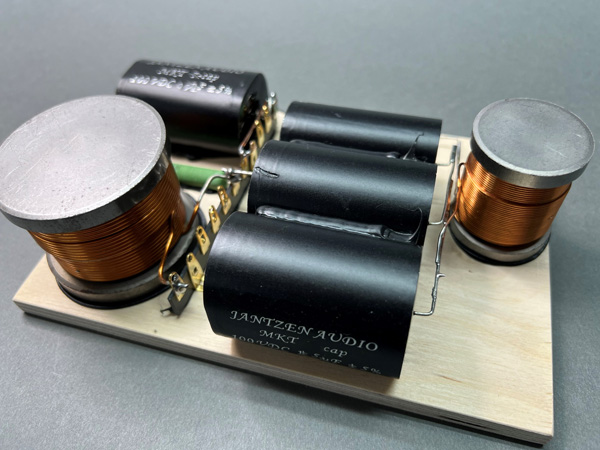
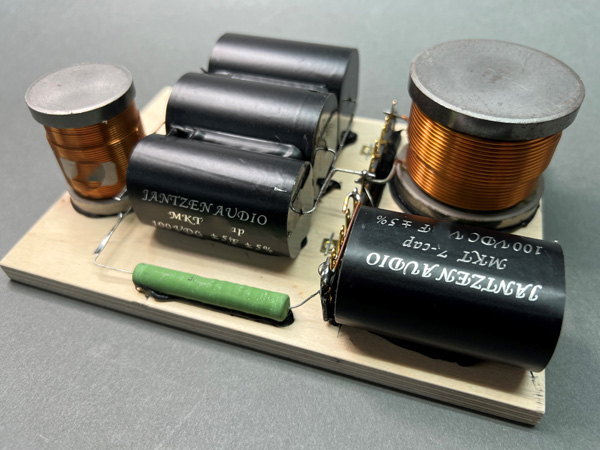
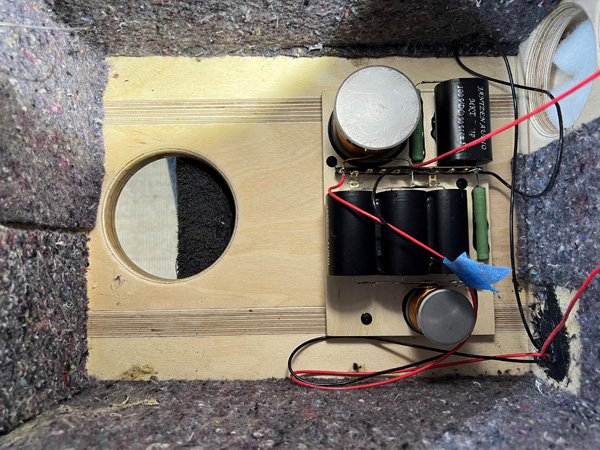
Fasten xover board with screws to the rear panel.
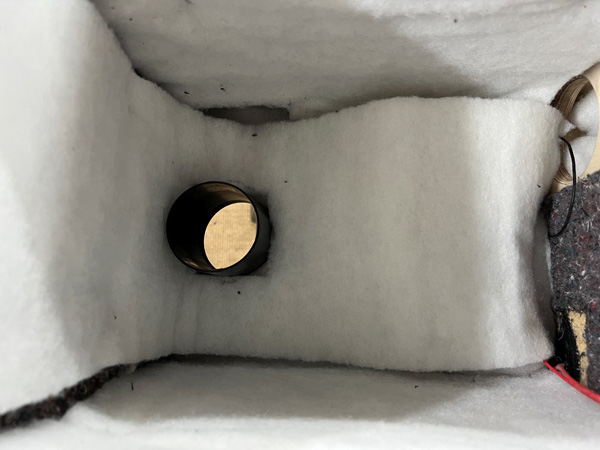
Speaker Wiring:
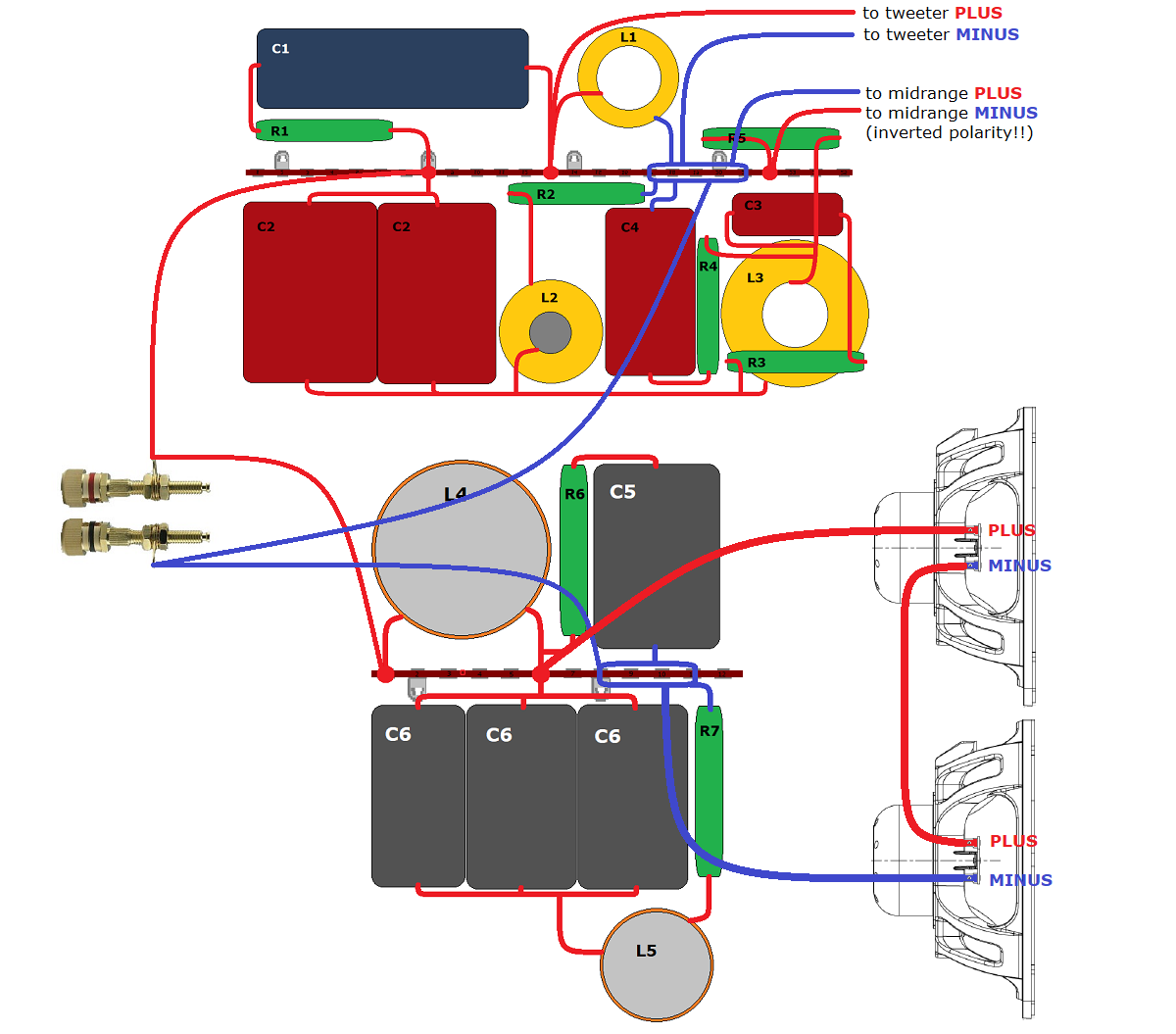
Placement of x-overs:
